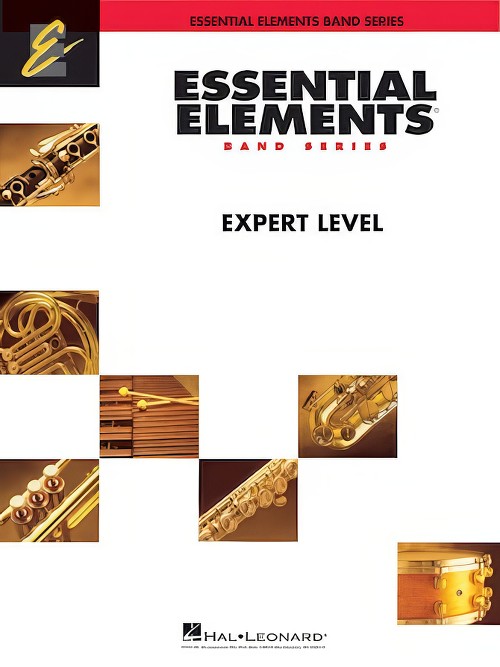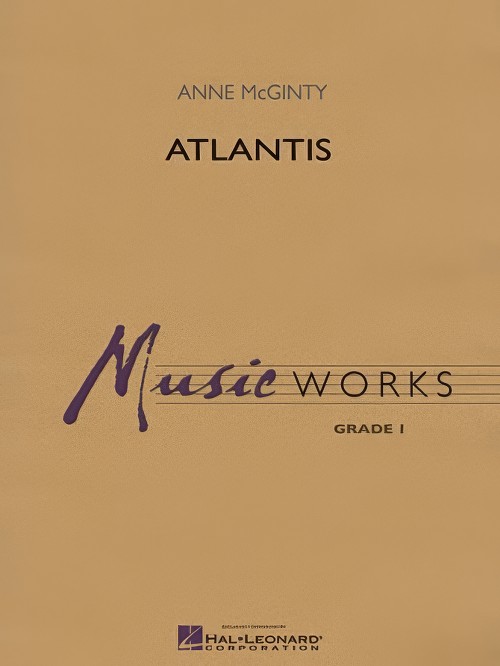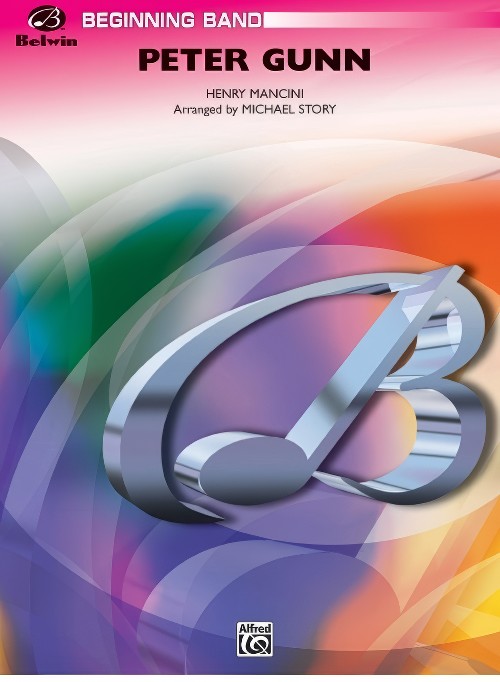Results
-
 £42.50
£42.50American Tribute (Concert Band - Score and Parts) - Moss, John
This is a masterful arrangement of three of America's most important and well-known patriotic songs. After a stately opening on Yankee Doodle, the lower voices are featured on My Country, 'Tis of Thee. America, The Beautiful brings it to an emotionally charged finish.
Estimated dispatch 7-14 working days
-
 £49.99
£49.99Atlantis (Concert Band - Score and Parts) - McGinty, Anne
Already a classic in the grade 1 repertoire, Anne McGinty's composition sounds sophisticated without being hard. It features effective use of polychords, modal harmonies and a driving percussion part. Written with just a single tempo, this is sure to make your beginners sound great!Duration: 2:05
Estimated dispatch 7-14 working days
-
 £54.95
£54.95Peter Gunn (Concert Band - Score and Parts) - Mancini, Henry - Story, Michael
Everybody wants to play Peter Gunn. Now, even your beginning band can enjoy all of the macho thrills depicted so powerfully in this chart. It is easy, but oh, so effective!
Estimated dispatch 7-14 working days
-
 £31.68
£31.68It's Bandtastic (Concert Band - Score and Parts)
This is an exceptional concert or festival piece for the end of the first year or for second year bands. It contains all of the unmistakable Swearingen magic and yet remains very playable. A great vehicle for teaching syncopation as well as musical style, all of the ranges are very moderate, and with the exception of a few notes in the first clarinet part, all of the clarinets remain below the break.
Estimated dispatch 7-14 working days
-
 £24.75
£24.75Sax Cymbal (Concert Band - Score and Parts)
A stirring, yet very easy march with a slightly British feel. Well constructed and appealing, it will be play able by most bands toward the end of their first year. This is a number you will continue to use for years to come.
Estimated dispatch 7-14 working days
-
 £34.65
£34.65Sunset on the Sahara (Concert Band - Score and Parts)
An appealing and energetic concert or contest piece for young bands that your students will love to prepare and perform. Bold and rhythmic at the beginning, it also contains a slower expressive section which will help young musicians learn legato phrasing techniques. On the easy side of grade 2, this is an exceptional composition that should be in every young band library.
Estimated dispatch 7-14 working days
-
 £76.99
£76.99Souvenir De Porto Rico - Louis Moreau Gottschalk
Gottschalk didn't live long enough to leave a large catalogue, but the works he brought to the public were quite popular in their day. This is one of his more well-known works, skillfully rendered for band by Michael Brignolo. It brings the vivid colors and sounds of the Caribbean to life.
Estimated dispatch 7-14 working days
-
 £76.99
£76.99A Little Tune - Thomas Doss
It's the little things that enrich our lives and bring a smile to our faces: a sunrise, a beautiful memory, a friendly conversation or even just a lovely melody. Hopefully, you'll find this is also true for Thomas Doss' little tune which the composer had written for his wife and youngest son as a souvenir of their road trip through Ireland.
Estimated dispatch 7-14 working days
-
 £152.99
£152.99The Legend Of Spirit Island - Philip Sparke
The Legend of Spirit Island was commissioned by the Twin Ports Wind Orchestra, Duluth, Minnesota (Mark Whitlock, conductor), to honour the euphonium player, Dick Carlson. The piece takes its title from a local legend about Spirit Island, which lies in a gap of the St. Louis River called Spirit Lake. The legend tells the story of Chaska, the son of a Dakota Chief, and Wetona, the daughter of Ojibwe Chief Buckado. He was handsome and she was beautiful; it wasn't long before they fell in love. This is a challenging euphonium solo in which the versatile soloist can explore very expressive melodic sequences, as well as energetic, technical sections.
Estimated dispatch 7-14 working days
-
 £118.99
£118.99Kool & the Gang Greatest Hits
Top music arranger, Gilbert Tinner has a great deal of expertise in all styles of entertainment music. He has shared the stage with many famous artists as a musician.This is a groovy arrangement of a few of the greatest hits of Kool and the Gang such as, Joanna, Get Down On It, Celebration and Ladies Night. Get your audience on their feet!
Estimated dispatch 7-14 working days
